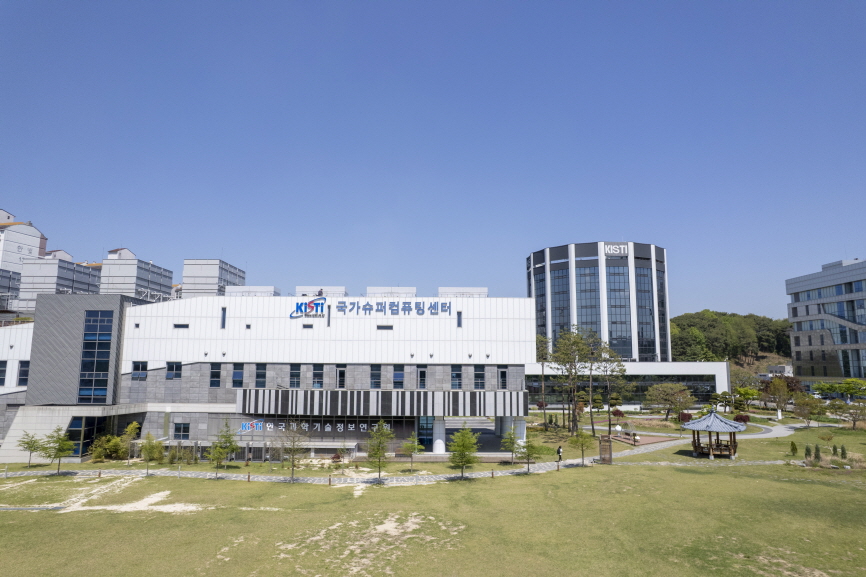KISTI Begins Construction of Korea’s 6th National Supercomputer, Expected to Rank Among World’s Top 10
이정훈 2025-05-16 View. 11,776KISTI Begins Construction of Korea’s 6th National Supercomputer, Expected to Rank Among World’s Top 10
- Signed contract worth KRW 382.5 billion with global supercomputer manufacturer HPE
- Equipped with 8,496 GPUs to meet massive computational demands for AI+S&T and more

□ The Korea Institute of Science and Technology Information (KISTI) announced on May 12 that it has signed a final contract with Hewlett Packard Enterprise (HPE) for the construction of Korea’s 6th national supercomputer. The contract is valued at KRW 382.5 billion, including KRW 78 billion for five years of maintenance.
□ HPE, the contracted company, possesses proprietary network technology specialized for supercomputers and has extensive experience in building large-scale systems. In the TOP500 list of the world’s supercomputers published in November 2024, HPE systems ranked 1st (El Capitan, USA, 2.7 EFlop/s), 2nd (Frontier, USA, 2.0 EFlop/s), and 5th (HPC6, Italy, 607 PFlop/s), with a total of 106 entries on the list.
※ 1 PetaFlop/s = 1 quadrillion (1,000 trillion) calculations per second
□ The 6th National Supercomputer is scheduled for completion in the first half of 2026. It will serve as a national flagship high-performance computing (HPC) service, supporting research and development in high-precision scientific and engineering simulations as well as large-scale artificial intelligence in an increasingly AI-driven global R&D and industrial environment.
□ The system will be equipped with 8,496 of NVIDIA’s latest GPUs, including the GH200 model, and will feature computing performance of approximately 600 PFlop/s, 205 petabytes of storage, and ultra-fast networking with speeds over 400 Gbps. It is expected to rank within the top 10 of the TOP500 list.
※ GH200: A CPU+GPU integrated accelerator chip that enhances data processing efficiency by combining the H100 architecture with the ARM-based ‘Grace’ CPU
□ This configuration is expected to be highly effective not only for AI training and inference, but also for scientific computing, simulation, and research on large-scale AI models. It will significantly enhance national R&D productivity.
□ On March 12, the Korean Ministry of Science and ICT announced the "AI+S&T Promotion Plan," aimed at responding to the global shift toward AI-centered R&D. The plan seeks to accelerate the integration of AI into Korea’s relatively early-stage scientific and technological research ecosystem.
□ In particular, the plan promotes the development of eight specialized AI models across fields such as next-generation materials, innovative new drugs, and ultra-fine semiconductors. This "S&T Innovation Acceleration" strategy aims to revolutionize existing R&D and secure AI-based technologies optimized for scientific knowledge creation.
※ AI+S&T Specialized AI Model Fields: Next-generation materials, innovative new drugs, ultra-fine semiconductors, space exploration, quantum computing, next-generation secondary cells, eco-friendly technologies, future energy
□ There is currently a significant shortage of shared high-performance GPU infrastructure in the public sector. As a result, researchers often need to purchase expensive GPUs individually or rely on overseas cloud services using R&D budgets. This not only imposes a heavy financial burden but also raises concerns over research data security and potential leakage.
□ To address this, KISTI plans to immediately begin supporting various computational demands—including large-scale scientific computing, data analysis, AI+S&T research, and medium-to-large AI development*—upon completion of the 6th National Supercomputer.
* Medium-to-large AI development refers to training or scientific computation tasks using 50 to 200 GPUs over a period of up to 3 months.
□ Considering that the accumulated demand for GPU usage in research and industrial fields cannot be resolved all at once, discussions are also underway with financial authorities to establish a customized “AI+S&T Public Infrastructure.” This infrastructure will distribute the demand for specialized GPUs by research field and enable shared use among government-funded research institutes and others.
※ Examples include the following:
(Materials) Development of innovative material technologies using multimodal AI
(New Drugs) AI-based compound synthesis and drug property prediction
(Energy) AI-driven fuel cell manufacturing processes
(Smart Manufacturing) Autonomous AI manufacturing processes for semiconductor components
□ Lee Sik, President of KISTI, stated, “The 6th National Supercomputer will serve as a core national infrastructure driving scientific and technological innovation in the AI era, providing domestic researchers with a safer and faster high-performance computing environment. KISTI will continue to play a leading role in establishing a public high-performance computing ecosystem and supporting national R&D competitiveness.”
Attached files(1)

 Delete Article!
Delete Article!